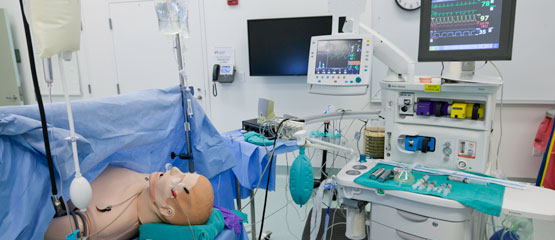
Immersive Learning Center: Suspend Disbelief
Multiple gunshot wounds. Mass casualties. A biohazard incident. It may sound like a typical episode of ER, but a virtual rendering of such serious situations could provide valuable training for future medical professionals. Stanford School of Medicine's Immersive Learning Center will allow medical students to integrate their classroom understanding in parallel with simulation-based practice. By creating a virtual microcosm of a hospital, for example, students can seamlessly maneuver through a variety of medical settings, without worrying about making mistakes.
"The goal is to have experiential learning be completely imbedded in the experience, starting at the beginning of a student's education and maintained through their careers," said David Gaba, professor of anesthesia and associate dean for immersive and simulation-based learning.
Emphasizing technique over technology, the center provides students with a range of simulations, from a single patient setting to a mass casualty. A "Wet/dry" classroom gives students an opportunity to practice suturing and giving injections. Mannequins serve as rehearsal for applying splints or casts. Actors help students prepare for patient care. A role-playing virtual world would allow students to represent nurses or doctors in a trauma ward and respond to a patient's changing condition.
To explore further aspects of the Center for Immersive and Simulation-based Learning (CISL), visit http://cisl.stanford.edu.
